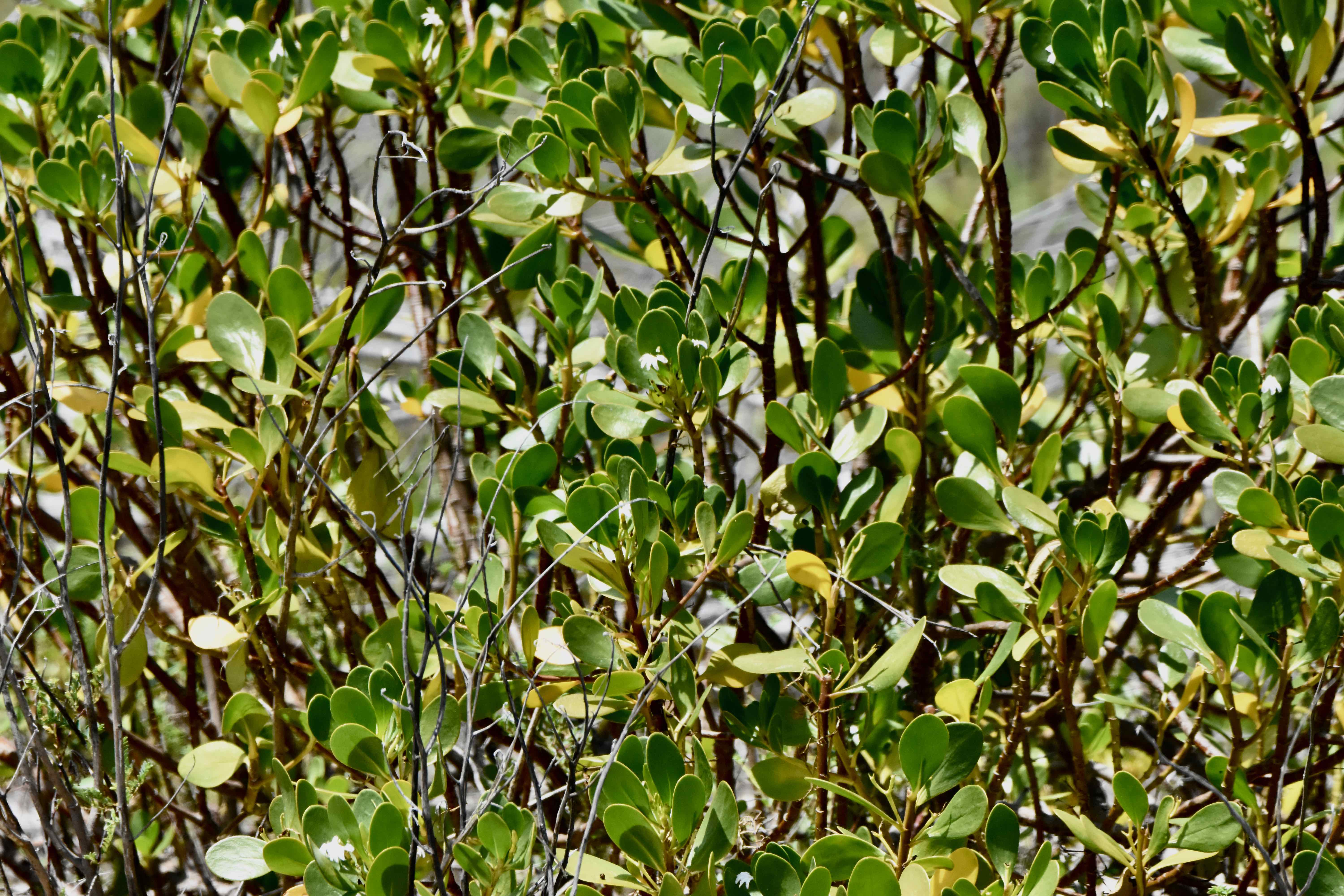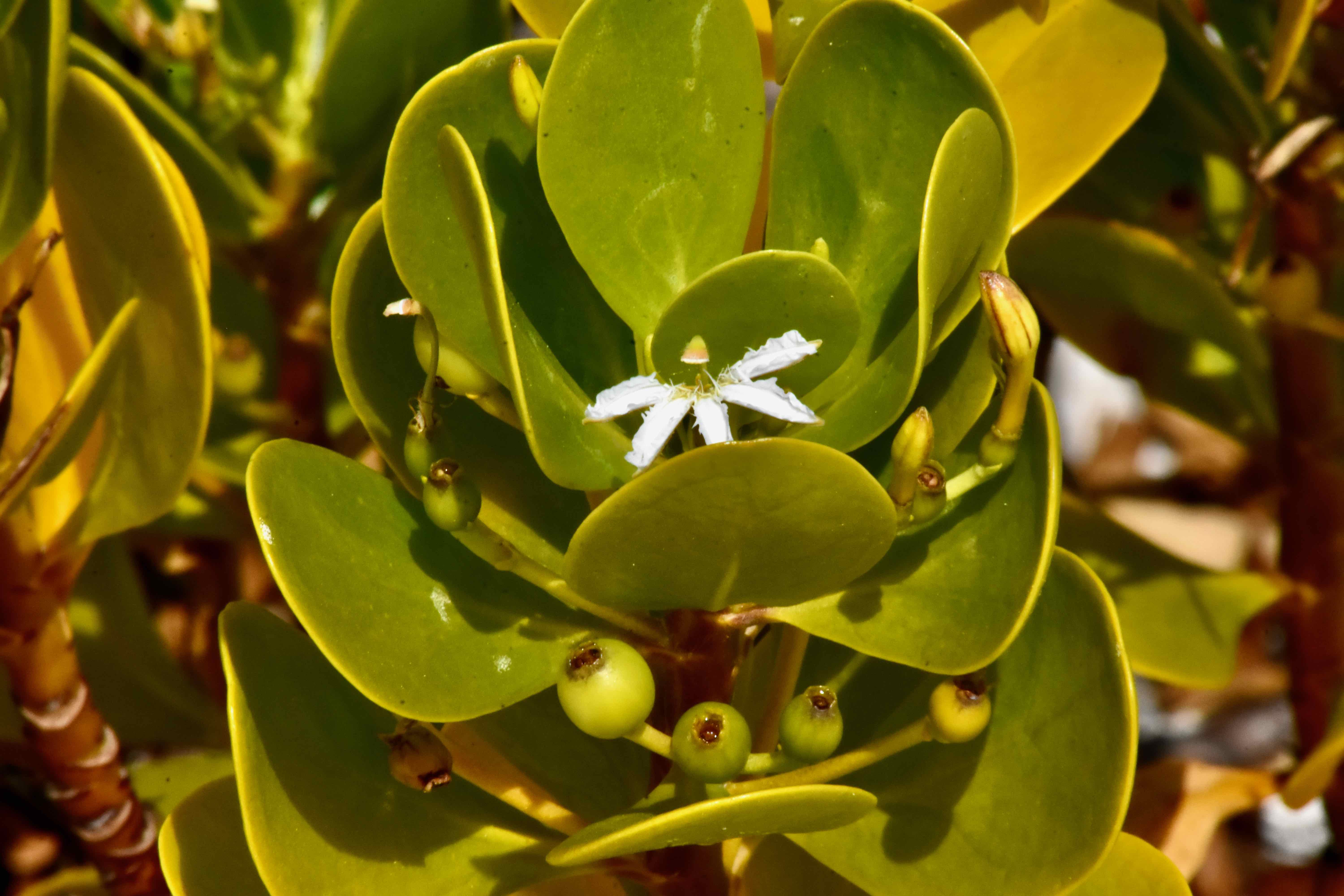
Beachberry, aka inkberry, photographed at Bush Key, Dry Tortugas National Park, Monroe County in April 2017.
Beachberry always strikes us as having something missing. Like half the flower, which resembles an open hand, with fingers splayed. And it's not just us — one of its common names is half-flower.
Beachberry goes by the scientific name, Scaevola plumieri. It's commonly called inkberry, but there is another local shrub also known by that name. To avoid confusion, we're going here with beachberry. The two plants don't look alike, other than both have dark fruit, and best we can tell don't share habitats, beachberry found in beach dunes, the other more inland.
One more thing: beachberry has a close relative, beach naupaka, Scaevola tacada, that closely resembles it and is found in the same places. Beach naupaka, however, is an invasive, while our guy, beachberry, is a Florida native and is state-listed as threatened. The two are so similar that some nurseries have been known to sell beach naupaka as beachberry, wittingly or not.
Beachberry is a rare plant that grows in the upland part of beach dunes. It's found on both Florida coasts, as far north as Brevard County on the Atlantic, and Hillsborough and Pinellas on the Gulf. It's also found in the Caribbean, Mexico, Central America, South America and the Galapagos. Floating seeds have taken it to Africa and parts of the Pacific basin.
The leaves and stems are thick, almost succulent. dark green and shiny, clustered near branch ends and about two to four inches long. The plant itself will grow to two to five feet high, more broad than tall, often trailing along the ground and forming a dense clump. It's often somewhat buried in sand, which can conceal its true height.
Beachberry is a pioneer species, establishing itself in open areas along the beach. Its roots trap and hold sand, building dunes and creating places where other dune plants can grow. Where branches touch the ground, new roots form.
Those hand-shaped flowers appear all year round, and produce a small oval-shaped berry-like black fruit called a drupe. Birds and allegedly iguanas eat the fruit. Bees and butterflies take nectar from the flowers. All parts of the plant are poisonous to us humans.
The berries provide an easy way to differentiate beach naupuka from beachberry — beach naupuka's are white to beachberry's black. There are other differences between the plants but none nearly as stark. Beachberry is much shorter, its leaves are smaller and less dense than beach naupuka. To our eye, beachberry has a tougher, less refined look as well.
Beachberry is used in coastal landscapes and in restorations. It's valued as a ground cover, screen, hedge or foundation plant and as a dune stabilizer. It is available from nurseries that specialize in native plants, but try to buy from a reputable retailer.
It is a member of the Goodeniaceae family, most members of which are found in Australia. Other names for this plant: gullfeed, fan flower and waxy bush.
Dry Tortugas National Park



